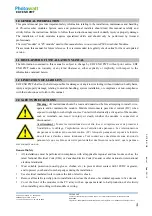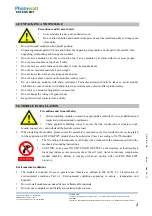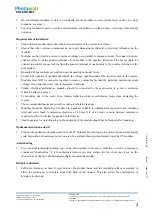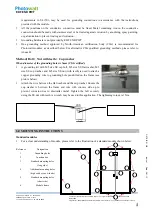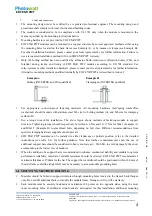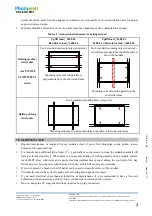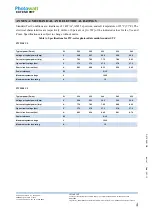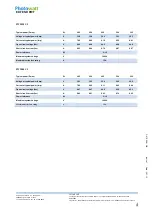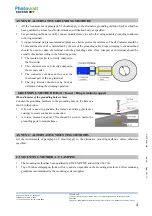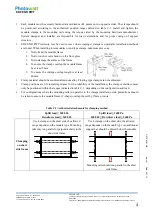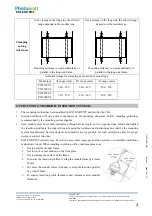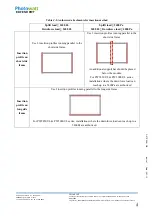
EDF ENR PWT
33,
Rue
Saint
Honoré
‐
Z.I.
Champfleuri
38300
Bourgoin
Jallieu
‐
France
Tel
:
33
4
74
93
80
20
‐
Fax
:
33
4
74
93
80
40
EDF
ENR
PWT
Société
par
actions
simplifiée
à
associé
unique
–
au
capital
de
37
505
000
€
‐
N°
513
281
972
RCS
NANTERRE
Siège
social
:
100
Esplanade
du
Général
de
Gaulle
–
Cœur
Défense
–
Tour
B
92932
Paris
La
Défense
cedex
.
D07-P0
6-01
GB
Ind
ice
1
Date
:
3
-01-13
ANNEX B: ALTERNATIVE GROUNDING METHODS
All the requirements of paragraph 5.2 should apply to the alternative grounding methods. Each method has
been qualified by at least one North-American certification body, as specified.
For grounding methods A and B, connect module frames to each other using suitable grounding conductor
with ring terminals.
A copper terminal ring is recommended (please see below picture for reference). The d2 diameter should be
5.3mm and the size of d1 is determined by the size of the grounding cable. Proper crimping tool and method
should be used to crimp the terminal onto the grounding cable. Once crimped, each terminal should be
visually checked according to the following points:
1.
The insulator jacket is correctly crimped in
the first collar
2.
The conductor core is correctly crimped in
the second collar
3.
The conductor core does not run over the
functional part of the ring terminal
4.
The ring terminal should not be bent or
deformed during the crimping operation.
GROUNDING METHOD B: Bolt + K-nut + Ring terminal (copper)
When diameter of the grounding holes is 5mm
Connect the grounding hardware to the grounding hole on the frame as
shown in the picture.
A K-nut is used to penetrate the frame’s anodizing (protective
coating) to create conductive connection.
A torque moment of about 3Nm should be used to fasten the
grounding parts to module frame.
ANNEX C: ALTERNATIVE MOUNTING METHODS
All the requirements of paragraph 6.0 should apply to the alternative mounting methods, unless otherwise
specified.
C.1 MOUNTING METHOD A: CLAMPING
The mounting method has been qualified by EDF ENR PWT and certified by CSA.
Top or bottom clamping methods will vary and are dependent on the mounting structures. Follow mounting
guidelines recommended by the mounting system supplier.


